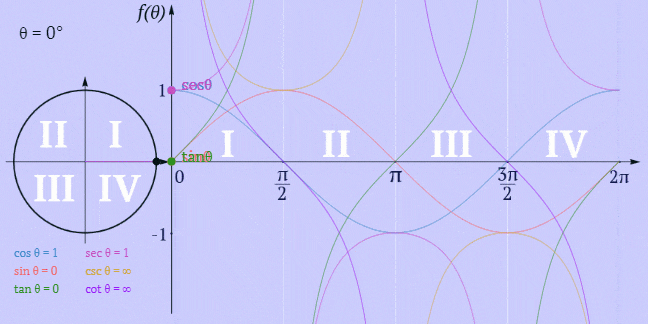|
you think you understand sin and cos and tan pretty well, math class is bussin', but then they start adding a little 'h' to the end of each one, and you're like... c'mon now loving hyperbolic functions, what the gently caress
|
|
|
|

|
| # ? May 7, 2024 21:42 |
|
Ape Fist posted:I'm a programmer and I don't know anything about math but I assume none of it is more complex than object inheritance. Finally someone telling 'Math people' how it is in the 'real world'. There is nothing that math has ever done or shown or whatever the hell it's even supposed to be doing (who cares) that object inheritance doesn't cover and even if it did (it doesn't and never will), who cares. lmao math
|
|
|
|
i like math but as an engineer i make a complete mockery of it every day
|
|
|
|
Nobody ever needed trigonometry, so relax, OP
|
|
|
|
 math is the most pure and fundamental science and logic of the entire universe math is the most pure and fundamental science and logic of the entire universe
|
|
|
|
Computer maths is terrible. I hope to never see another galerkin method of discretising a function as long as I live.
|
|
|
|
OP did you read the maddox page about math I don't blame you if you didn't but still
|
|
|
|
EorayMel posted:OP did you read lemme tell you something else that's over-rated, buckshot
|
|
|
|
Is this like one of those things where you really do understand math but you’re talking about someone else in the first person because you are a crazy person or did you really flunk out of jr high op? 
|
|
|
|
Ever heard someone old call them sine ratios? They are literally a ratio. Tan of 60° is 1.73. If you draw a right triangle with a 60° angle and a side 1m long, then the side opposite the 60° will be 1.73m long. All the stuff about Opposites and SohCahToa is just makes sure that you get the side you want from the numbers you have.
Jaguars! fucked around with this message at 23:10 on Jun 2, 2022 |
|
|
|
Flowers for QAnon posted:Google “ soh cah toa” and click the images tab Thought this was gonna be trigonometric goatse and I’m disappointed
|
|
|
|
  https://www.youtube.com/watch?v=DWYqu1Il9Ps Strumpie fucked around with this message at 23:49 on Jun 2, 2022 |
|
|
|
All you have to know is these 3 equations: Say you have a right triangle and you know the angle x and you know the length of the "adjacent" side and need to figure out the length of the "opposite" side. Then you'd look for which of those 3 equations has "adjacent" and "opposite" in it, which is the one on the right. So you'd plug the known numbers into that equation and solve (using a calculator). If you wanted to find the hypotenuse, you'd use the middle equation. Since that has "adjacent" and "hypotenuse" in it. That's really all trigonometry is. You don't need to know the meanings of "sine" and "cosine" and "tangent". You just have to know how to choose which of those 3 formulas to use, which is pretty easy.
|
|
|
|
ClamdestineBoyster posted:Is this like one of those things where you really do understand math but you’re talking about someone else in the first person because you are a crazy person or did you really flunk out of jr high op? I am actually poo poo at math yeah Schweinhund posted:All you have to know is these 3 equations: I do get the calculation aspect of it, it bugs me because I look at sine, cos and tan and it feels like there's some information missing, like they're "magic numbers" or something. Like, how did people figure this out? If I understood the full reasoning I think I'd be good.
|
|
|
|
for a right triangle the ratios between the sides for any given angle are identical regardless of its size, therefore that size information is not needed here
|
|
|
|
 Every triangle fits inside a circle if the circle is big enough or the triangle is small enough. Forget everything you've been taught about maths OP it's all instinct, when you know, you know.
|
|
|
|
If poo poo like this existed when I was in high school, I would have done so much better than barely scraping by in Functions class: (Ironically it was this unit, on sinusoidal functions, that saved my mark from failing.) Similarly, I tutored a bunch of classmates in college (audio recording), and compression was something that always stumped people - until you'd show them the metering mode that's a plot of input gain/output gain/gain reduction over time that came with Ableton's latest version. That poo poo is a godsend to amateur producers everywhere.
|
|
|
|
Hey OP if you have a circle defined by x^2 + y^2 = 1, then for any point (x, y) on that circle, x is cos and y is sin for whatever angle there is between that point and the horizontal axis. That's where the specific numbers come from.
|
|
|
|
Pot Smoke Phoenix posted:Do drugs and leave that poo poo up to people who are crazy enough to put up with it. Yo dog the people who do math n poo poo also do drugs, it helps Mooey Cow posted:Hey OP if you have a circle defined by x^2 + y^2 = 1, then for any point (x, y) on that circle, x is cos and y is sin for whatever angle there is between that point and the horizontal axis. That's where the specific numbers come from. Also yeah unit circle is what made me understand trig seriously op just learn the unit circle
|
|
|
|
Mooey Cow posted:Hey OP if you have a circle defined by x^2 + y^2 = 1, then for any point (x, y) on that circle, x is cos and y is sin for whatever angle there is between that point and the horizontal axis. That's where the specific numbers come from. It's even easier than that. It's the lengths of sides of your right triangle if the hypotenuse is =1 Thus if your hypotenuse is not =1, but the angles are the same, you can use cos and sin to figure out the lengths of the sides
|
|
|
|
I have 3 brothers in law that have college math degrees and goddamn they are the most boring people on the planet
|
|
|
|
Math is just a bunch of poo poo we made up to fit into the already existing laws of the universe OP, in the same way the concept of measuring time is a human construct. In other words, SOHCAHTOA deez nuts OP lmao
|
|
|
|
What's so hard about trigonometry? It's not like it's hot dogs.
|
|
|
|
Big Scary Owl posted:I do get the calculation aspect of it, it bugs me because I look at sine, cos and tan and it feels like there's some information missing, like they're "magic numbers" or something. Like, how did people figure this out? If I understood the full reasoning I think I'd be good. I mean, as far as I know they measured them. Since all triangles with two of the same angles are similar, the proportion of any two triangles with a 90 degree angle and one other angle in common will share the same ratio of side lengths, so all you'd really need to do was construct one right triangle with some other angle of size x, measure its hypotenuse and the side opposite your other known angle (probs with a ruler, although we've got more exact tools to do that now), and voila, the sine ratio for any right triangle with the angle x. It literally does not matter what the side lengths of the triangle you drew are, since the ratio will be the same no matter how big or small the triangle is. Now, in practice, it would be a huge pain in the rear end to have to draw and measure a triangle for every possible acute angle, so we got a calculator to store all the values, and make it spit the numbers back out when we ask for it. Hell, you can just google "table of sine values" and get a list of them that way instead.
|
|
|
|
I did a double major in maths and physics. Trigonometry can suck my hog. It's fiddly and annoying. Calculus was way nicer to work with. Also I agree with everyone that maths is wrong and we should throw it out. Useless, all of it. I wasted too much time I'll never get back because of numbers. The jerks.
|
|
|
|
For a thread about triangles you nerds sound like a bunch of SQUARES!
|
|
|
|
Mister Speaker posted:If poo poo like this existed when I was in high school, I would have done so much better than barely scraping by in Functions class: Math porn
|
|
|
|
 The sine of an angle is where the point created by that angle falls on the circle measured within one dimension (up and down) and the cosine is where the same angle ends up falling on the circle within the other dimension (left and right).
|
|
|
|
Mister Speaker posted:If poo poo like this existed when I was in high school, I would have done so much better than barely scraping by in Functions class: As someone who does a whole lot of tutoring I think mashing these all together is more math porn for people who already understand than a helpful graphic for those who don't. Separating out the individual functions could be a nice graphic to explain sin or cosine individually though. When I've helped kids with trig it mostly boils down to getting them to understand a unit circle and how the x/y components relate to the trig functions. Everyone learns differently but at the end of the day if you can get someone to grok the swap between a 30 and 60 degree angle and the various quadrants +/- attributes they're gonna do well on a test.
|
|
|
|
ArbitraryC posted:As someone who does a whole lot of tutoring I think mashing these all together is more math porn for people who already understand than a helpful graphic for those who don't. . Highly agree
|
|
|
|
Cos is how many times smaller one specific side of a right triangle is than the another side.
|
|
|
|
I still think trigonometric identities are stupid. Never understood the people that would instantly see when an identity is present to use it in some way 
|
|
|
|
I still remember the first time i derived the kinematic equations for the first time and realized that it was possible to just keep substituting v=d/t and a=v/t into itself until you eventually end up with the quadratic equation. that was wild
|
|
|
|
Methanar posted:I still think trigonometric identities are stupid. drat this is giving me flashbacks to high school where they made us memorise these, when will I even be in a situation where I need to know all the trig identities and can't look it up? furthermore if a problem needs trig identities to solve it isn't worth solving.
|
|
|
|
Butternubs posted:drat this is giving me flashbacks to high school where they made us memorise these, when will I even be in a situation where I need to know all the trig identities and can't look it up? furthermore if a problem needs trig identities to solve it isn't worth solving. Fourier transforms are pretty worth solving
|
|
|
|
I remember early maths degree they gave us a sheet with those trig identities because the fundamental questions required knowledge of what they represented and things like the unit circle, so they deemed rote memorisation of the identities as trivial and useless. If you can figure out the meaning behind trigonometry you can get the answer, knowing a specific identify by heart can be quicker but doesn't go very far to furthering your knowledge unless you know why the formula works. In summary, google the specific equations because no one cares if it's a plus or minus, and no one is doing maths in a bomb defusing situation.
|
|
|
|
Arrhythmia posted:Fourier transforms are pretty worth solving just make your oscilloscope do it for you
|
|
|
|
I learned trig over a weekend and tested in to precalculus which was basically the same as not learning trig, because you're not going to retain something you learn over a weekend unless it's, like, whistling so when I went on to higher math I had to basically go back from time to time like "gently caress gently caress gently caress what the gently caress is the unit circle" and from what I remember the unit circle is the best thing in the universe? if you can remember like 40% of it you can extrapolate the rest on a piece of scratch paper, and it has just about everything you need to know just on it (as long you remember cosine is at the x coordinate and that tangent is sine/cosine, but if you don't remember that both can be derived from knowing why the unit circle works and, just, soh cah toa) I don't even really think of trig functions as being relationships between angles and length anymore, primarily, to me sine is a wavy line oscillating between 1 and -1 whose intercepts and inflection points are all proportional to pi and if you're ever in doubt about when that is, muhfuckin unit circle trig identities were fun in integral calculus, though, they're like little logic puzzles that might be the geekiest thing I've ever said but it's true, it's weirdly satisfying using them to crack open a problem if you know them at a glance you can be like (this is an extremely basic example because I haven't been in a calc class in years please do not make fun of me) ok well sin2𝑥=½(1-cos2𝑥) so ∫sin4𝑥d𝑥 = ∫(½(1-cos2𝑥)•½(1-cos2𝑥))d𝑥 = ¼ ∫(1-cos2𝑥)(1-cos2𝑥)d𝑥 = ¼ ∫(1-2cos2𝑥+cos22𝑥)d𝑥 and cos2𝑥 = ½(1+cos2𝑥) means cos22𝑥 = ½(1+cos4𝑥) which means ¼ ∫(1-2cos2𝑥+cos22𝑥)d𝑥 = ¼ ∫(1-2cos2𝑥+½(1+cos4𝑥))d𝑥 = ¼ ∫(1-2cos2𝑥+½+½cos4𝑥)d𝑥 and since if f(𝑥) = g(𝑥)+h(𝑥) then ∫f(𝑥)d𝑥 = ∫g(𝑥)d𝑥+∫h(𝑥)d𝑥 that means ¼ ∫(1-2cos2𝑥+½+½cos4𝑥)d𝑥 = ¼(( ∫1d𝑥)-(2∫cos2𝑥d𝑥)+(∫½d𝑥)+(½∫cos4𝑥d𝑥)) which is obviously equal to |¼(𝑥-sin2𝑥+½𝑥+⅛sin4𝑥)+c| and since you're in a calculus class you can just stop there because your high school math teachers lied to you, nobody gives a poo poo about simplifying your answers no I have not used any of the math they made me learn for my computer science degree but I'm glad I learned it I'm glad I know how to solve optimization problems, mostly but maybe some day somebody will hire me to do something with, like, spherical harmonics and I'll be like AHHHHHHHHHHHHHHH 😱😱 because I didn't learn that
|
|
|
|
At their core, sine, cosine, and tangent lines are all ratios, as someone mentioned earlier. Let's start with a basic triangle: It's got three sides, as triangles do. A horizontal base, a vertical height, and an angled hypotenuse, plus all the angles made from where the lines meet. In this case, we want to do some digging and see if we can figure out a pattern for that angle in the bottom right, maybe relate it to some of the other values in the triangle. To make the sides we're talking about clear, let's label those sides relative to the angle in question, which we'll call theta:  Alright, so we have theta, the HYPOTENUSE, the side OPPOSITE theta, and the side ADJACENT theta. Hypotenuse is h, opposite is o, adjacent is a. That's all well and good so far, but we don't have anything to really derive yet. What we can notice here, however, is that there's an infinite number of triangles that we can draw, all with different side lengths, but with the same value of theta:  Notice that the opposite and the adjacent need to change by certain amount each, in order to preserve the value of theta. In the above triangle, we can see that increasing a by two squares means we need to increase o by one square to keep the angle the same. What we have now is a ratio, the amount that one side needs to increase relative to the other in order to preserve that angle. And if we look a little closer, we can actually find that all of the sides of this triangle need to maintain a certain ratio to preserve the angle; let's give these ratios names to make it easier to identify them, and let's explicitly say which ratios we're taking when we talk about them: sine(theta) = opposite / hypotenuse cosine(theta) = adjacent / hypotenuse tangent(theta) = opposite / adjacent For any given angle of theta and a single side measurement, we can now derive the dimensions of the rest of the triangle, and all because triangle sides and angles have a very rigid relationship. If we were to simplify this and make sure that our side values are capped at one, we can draw what's called the unit circle:  What does all of this show us, and how does it relate to a circle? Well, if we have a line length of 1, and we set it at some angle theta from the horizontal axis, we can derive the sine, cosine, and tangent from it pretty easily, since we always know the length of the hypotenuse. One neat thing about the unit circle is that for any given angle of theta, the cosine of that angle is the value of the horizontal line, while the sine is the value of the vertical line. If we were to chart the sine and cosine of each value of theta, all around from 0 degrees to 360 degrees, we'll notice a few things. One, we notice that they are periodic; a 0 degree angle, a 360 degree angle, a 720 degree angle, and so on will all have the same values. If you keep increasing theta, you'll get the same graph no matter how far out you go. Two, we notice that they hit a maximum at 0, 90, 180, and 270 degrees. Those angles give us a cosine of 1 at 0 and 180 degrees, and a sine of 1 at 90 and 270 degrees, which is the highest that those values can reach. We can't go lower than zero, and we can't go higher than 1. Three, we notice that cosine takes on the exact same values as sine, just at different angle measurements. Sine is the exact same graph as cosine, only shifted along a little bit. Skinner posted this gif that illustrates it pretty well: We can use this to turn a sine value into a cosine value at a different angle, which comes in handy for certain substitutions and proofs. You can take this further into the complex plane, and do some crazy poo poo with euler's theorem to relate sine and cosine to the square root of negative one, which has some far reaching effects in things like discrete number theory and electrical engineering. Trig is some baller poo poo, it's fun, it's super useful, and I loving love it.
|
|
|
|

|
| # ? May 7, 2024 21:42 |
|
I am getting progressively worried this thread is an incredibly smart honeypot
|
|
|









































